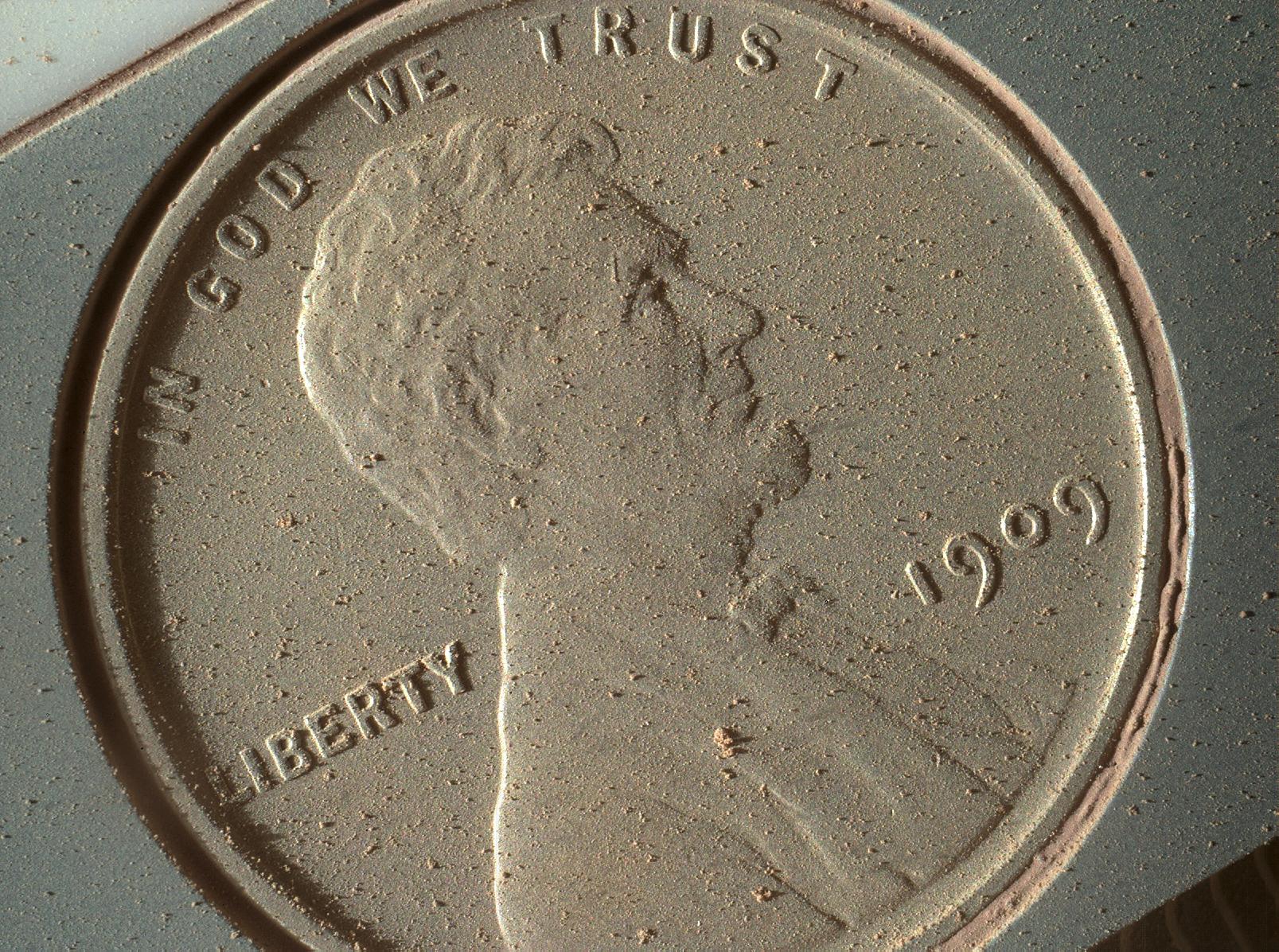Lucky Penny on Mars

| Credit | NASA/JPL-Caltech/MSSS |
|---|---|
| PIA Number | PIA17365 |
| Language |
|
This image of a U.S. penny on a calibration target was taken by the Mars Hand Lens Imager (MAHLI) aboard NASA's Curiosity rover in Gale Crater on Mars. At 14 micrometers per pixel, this is the highest-resolution image that MAHLI can acquire.
This image was obtained as part of a test on the 411th Martian day, or sol, of the mission (Oct. 2, 2013), the first time the rover's robotic arm placed MAHLI close enough to a target to obtain the camera's highest-possible resolution. It shows that, during the penny's 14 months (so far) on Mars, it has accumulated Martian dust and clumps of dust, despite its vertical mounting position on the calibration target for MAHLI.
The previous highest-resolution MAHLI images, which were pictures of Martian rocks, were at 16 to 17 micrometers per pixel. A micrometer, also known as a micron, is about 0.000039 inch.
The penny is a 1909 VDB penny minted in Philadelphia during the first year that Lincoln cents became available.
"When a geologist takes pictures of rock outcrops she is studying, she wants an object of known scale in the photographs," said MAHLI Principal Investigator Ken Edgett, of Malin Space Science Systems, San Diego. "If it is a whole cliff face, she'll ask a person to stand in the shot. If it is a view from a meter or so away, she might use a rock hammer. If it is a close-up, as the MAHLI can take, she might pull something small out of her pocket. Like a penny."

